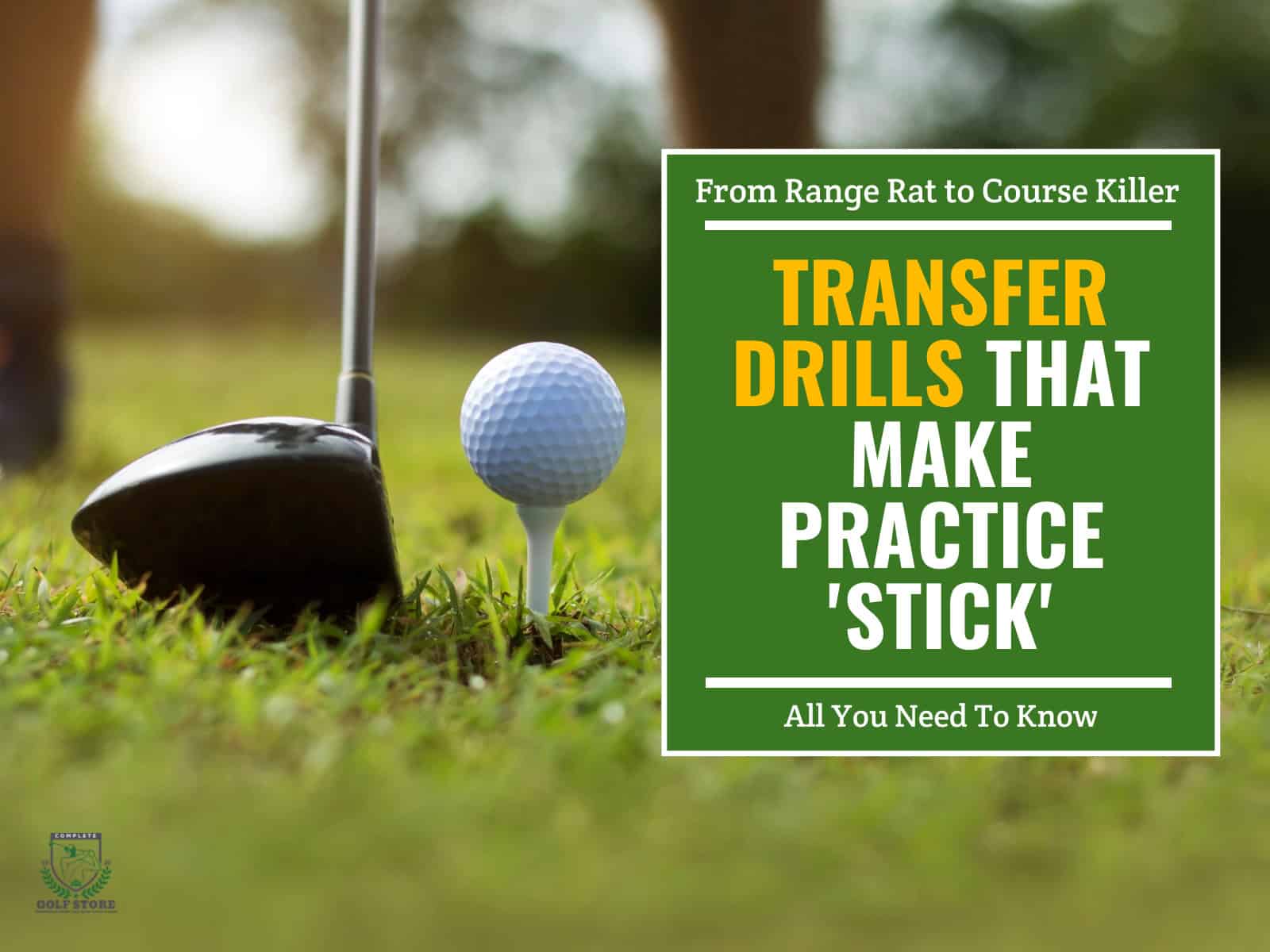Golf is a game that humbles you fast. One day you stripe a 7 iron, the next you can’t get the ball off the ground. That’s why the first 90 days matter so much; they set the tone for how you’ll learn, practice and improve.
Think of it like laying down tracks before the train rolls. Without a structured plan, you wander from YouTube tip to random drill, never knowing if you’re moving forward. With a clear roadmap, though, you can see progress, celebrate small wins and keep frustration from stealing your motivation.
Here, you’ll find a practical blueprint designed for busy people who can only play two or three days a week. The goal is simple: go from scoring 120+ to confidently breaking 100, while building the habits and confidence to keep climbing beyond that milestone.
- 1) Why a 90-Day Plan Works for Beginners
- 2) Core Fundamentals Every Beginner Must Learn
- 3) The 90-Day Roadmap
- 4) Weekly Practice Template (2–3 Days per Week)
- 5) Skill Checkpoints and Progress Tracking
- 6) Moving Beyond the First 90 Days
-
7)
Frequently Asked Questions
- 7.1) How do I accept an invite to play 9 holes if I’ve only practiced on the range?
- 7.2) How do I decide which club to use on the course as a beginner?
- 7.3) What are the essential items to bring to my first round besides clubs and balls?
- 7.4) How should I balance lessons with independent practice time?
- 7.5) How do I know if my grip or swing is drifting off track?
- 7.6) What should I do if I can’t meet the full 6–8 hours of practice each week?
- 7.7) When should I consider upgrading my beginner clubs?
- 8) Final Thoughts
Why a 90-Day Plan Works for Beginners
Starting out in golf can feel overwhelming. A clear plan helps you focus on what matters most, keeps progress visible and prevents wasted effort. That’s why the 90-day framework works so well: it balances structure with flexibility.

The Power of Short, Focused Timeframes
Three months gives you structure without dragging on forever. It’s enough time to build habits, yet short enough that you can see results before boredom sets in.
It’s like training for a 5K—you don’t need years, you just need weeks of steady effort. Each session builds on the last, so you carry momentum instead of starting over every time.
Setting Realistic Expectations: From 120+ to 100
Breaking 100 doesn’t mean hitting every fairway or sinking long putts. It means cutting out the wasted swings like topped drives, fat wedges and three-putts. If you’re starting at 120+, shaving off 20 strokes comes from fewer blowups, not perfect shots.
The plan sets checkpoints so you can see progress in pieces, whether that’s better contact on the range or finally carding a round without a triple bogey.
Balancing Work, Life and 2–3 Weekly Golf Sessions
You don’t need to live at the course. With a job and family, carving out two or three slots a week is enough. One focused practice, one short game session and one round or simulated round keeps you sharp.
It’s like strength training, as you don’t hit the gym every day, but steady reps add up. The key is sticking to the schedule, even if life pulls you in ten different directions.
Core Fundamentals Every Beginner Must Learn
Every golfer talks about swing speed and distance, but the basics decide whether you hit the ball clean or spend the round in the rough. Mastering these fundamentals sets the stage for steady progress and fewer wasted strokes.

Grip Basics for Consistency
Your grip is the only link between you and the club. Place the handle across your fingers, not your palm, and let your hands work together.
The left hand should show two knuckles, and the right hand should sit like a handshake. Keep it firm but not tense, like holding a tube of toothpaste without squeezing it out.
Posture and Alignment for Solid Contact
Stand like an athlete about to move. Bend from your hips, keep your spine straight and rest your weight between your toes and heels. Aim your feet, hips and shoulders parallel to the target line.
Good posture sets you up to swing with balance, while alignment keeps shots on track.
Swing Principles: Turn, Shift, Turn
Think of the swing as a three-beat rhythm. Turn your chest and hips back. Shift your weight toward the target as you start down. Then turn through so your belt buckle points at the flag. A balanced finish means you’ve done it right.
Ball Striking and Compression
Clean strikes come from hitting the ball before the ground. Let the club descend through impact so the ball compresses against the turf. Practice brushing the grass just ahead of where the ball sits.
The sound of a crisp strike tells you more than any scoreboard ever will, and once you hear it, you’ll want to hear it again.
The 90-Day Roadmap
Progress doesn’t happen by accident. A clear plan helps you focus on the right skills at the right time, so each week builds on the last. This roadmap breaks down three months of practice into manageable phases that take you from shaky basics to scoring with confidence.

Month 1 (Weeks 1–4): Building Foundations
Your first month is all about making golf feel less foreign. Grip, stance and short game basics come first because they control most of your early progress. Four to six hours a week is enough if you’re focused.
- Impact bag drills: Teaches the feel of striking through the ball instead of slapping at it.
- Short pitch shots: Practice wedges from 20–30 yards with a smooth rhythm. Control beats power.
- 3-foot putting drills: Sink short putts until they feel automatic. These strokes add up fast on the scorecard.
Month 2 (Weeks 5–8): Accuracy and Control
Once you’ve built a base, it’s time to tighten your aim. Accuracy beats distance for breaking 100. Five to seven hours a week lets you sharpen without overloading.
- Random club targets: Switch clubs often at the range and hit to different spots. Mimic the course.
- Chip & pitch ladder drills: Land balls at marked distances to build touch around the green.
- Lag putting practice: Roll putts from 20–40 feet and work on leaving them close. Avoiding three-putts saves strokes.
Month 3 (Weeks 9–13): On-Course Application
With fundamentals and accuracy in place, now you test yourself under pressure. Six to eight hours a week, much of it on the course, pushes you toward scoring rounds near 100.
- Simulated holes: Play practice rounds on the range by choosing a “hole” and hitting every shot as if you’re keeping score.
- Recovery practice: Drop balls in tough lies—rough, slopes or behind trees—and learn to escape without blowups.
- Confidence rounds: Play nine holes focusing on smart choices and routine. Scoring under pressure is the final step.
Weekly Practice Template (2–3 Days per Week)
Consistency beats intensity in the early months. Two or three focused sessions each week are enough to sharpen your skills and keep golf from feeling like a second job. Think of it as steady deposits into your game’s savings account.

Day 1: Range + Fundamentals (1 hr)
Spend this hour grooving contact. Warm up with half swings, then move into the drills that reinforce grip, stance and ball position. Keep the bucket small; 50 balls hit with purpose beat 150 smacked without thought. End by reviewing one swing on video to spot drift.
Day 2: Short Game + Putting (1–2 hrs)
Dedicate one block to shots inside 40 yards. Hit chips, pitches and simple bunker shots, always landing on a specific spot. After that, head to the putting green. Mix 3-foot “must makes” with long lags from 20–40 feet.
Build confidence on the short ones, and teach yourself touch on the long ones.
Day 3: Play or Simulated 9 Holes (1.5–2 hrs)
If you can get on the course, great. If not, simulate holes on the range. Pick a “par 4,” hit your driver, then switch clubs for the approach, even if you’re only aiming at different targets.
Treat each shot as if it counts for score. Pressure builds faster when your brain thinks you’re playing for real.
Optional: Weakness Drill Session (30 min)
End the week by addressing your biggest hole. If your chips are thin, chip. If you’re three-putting, stay on the green. Short, sharp focus here plugs leaks before they sink your round.
Skill Checkpoints and Progress Tracking
Without checkpoints, practice feels like hitting balls into the wind. You need simple markers to tell if the hours are paying off. These benchmarks keep you motivated and stop you from guessing about progress.

Month 1: Contact and Basic Short Game
At this stage, focus on how often you make clean contact. Track the percentage of shots where the ball flies instead of dribbling. In the short game, aim for half your chips and pitches to finish within 10 feet of the hole. On the putting green, your target is sinking 8 out of 10 from three feet.
Month 2: Accuracy, Wedge Play and Reduced 3-Putts
Now the game shifts to control. Your iron shots should start grouping closer together, not spraying all over. Wedge practice should get more precise—most shots inside 30 yards landing near your target zone. On the green, fewer three-putts is the goal. Track it honestly; one per round or less is a good sign.
Month 3: Consistent Scores Near or Below 100
At this point, the numbers tell the story. You should be scoring around 100, with fewer blowup holes and cleaner recoveries. Track fairways hit, greens reached in regulation and putts per round.
You don’t need pro stats, just enough to see if you’re trending down.
How to Track: Simple notebook, app or spreadsheet
Use whatever fits your style. A pocket notebook, a golf app or a spreadsheet all work. The tool doesn’t matter. What matters is writing things down so progress isn’t just a feeling.
Keep recording, and you’ll notice patterns: both the shots improving and the ones that keep costing strokes. That’s when the real adjustments start.
Moving Beyond the First 90 Days
Once you’ve made it through your first 90 days, it’s time to look ahead. The progress you’ve made is just the beginning. Now, it’s about pushing your boundaries, refining your skills and setting higher goals.

When You’re Ready to Break 90
When you start scoring in the low 90s or even breaking 100, you’ll begin to feel more confident with your game. But breaking 90 requires more than just better ball striking. It’s about decision-making.
Choosing the right club, knowing when to play it safe and avoiding big numbers. At this stage, you should focus on consistency, hitting more fairways, hitting greens in regulation and making fewer mental mistakes.
Adjusting Practice for New Goals
You’re no longer a beginner, so your practice should evolve. Focus on refining the skills you use most on the course: course management, approach shots and lag putting.
Practice for the situations you encounter most, like handling pressure or recovering from tricky lies. The goal is to keep improving, not perfect every aspect of your game.
Building Lifelong Habits in Golf
Golf is a lifelong pursuit, and while you’ll hit plateaus, you’ll also find new ways to improve. Incorporating regular practice into your routine, scheduling occasional lessons and staying mentally engaged are key to long-term success.
As you continue to play, remember to enjoy the process, as golf isn’t just about breaking scores; it’s about creating a lasting passion for the game.
Frequently Asked Questions
Here are some common questions new golfers often ask. If you’re unsure about something, you’re probably not alone. These answers will help you get started and clarify some of the common concerns as you begin your golf journey.
How do I accept an invite to play 9 holes if I’ve only practiced on the range?
If you’re comfortable hitting the ball consistently on the range, go for it. Playing 9 holes will help you experience the course, even if you don’t feel fully ready. Focus on making solid contact and managing your shots.
How do I decide which club to use on the course as a beginner?
When choosing clubs, think about the distance and the shot you need. Use your driver for long shots off the tee, but don’t feel pressured to use it every time. For approach shots, focus on accuracy rather than distance. A 7-iron is usually a safe bet for most mid-range shots. If in doubt, take the safer option.
What are the essential items to bring to my first round besides clubs and balls?
A golf glove is a must to protect your hands and improve your grip. Bring tees, a divot repair tool and a scorecard holder to track your progress. Some snacks and a water bottle will keep you energized, especially if you’re playing in warm weather.
How should I balance lessons with independent practice time?
Lessons help you grasp the fundamentals, but independent practice is where you cement what you’ve learned. Try to schedule one lesson per month and use your practice time to reinforce that lesson. Spend more time on areas you struggle with, and always practice with intention.
How do I know if my grip or swing is drifting off track?
Film yourself occasionally to check if your grip or swing is drifting. You might also notice inconsistencies in your shots. If you start slicing or hooking more than usual, your grip or stance may need adjustment. Trust your feel, and get feedback from a coach or fellow golfers when necessary.
What should I do if I can’t meet the full 6–8 hours of practice each week?
Don’t worry if you can’t commit to 6–8 hours. Quality over quantity matters more. Even 3–4 focused hours a week will make a big difference. Try to prioritize short game practice, as it makes up a significant portion of your score.
When should I consider upgrading my beginner clubs?
You don’t need to upgrade your clubs until you’re consistently hitting the ball well and understanding your game. Once you’re comfortable with the basics, you may want to try out clubs that better fit your swing. However, don’t rush the upgrade—solid fundamentals matter more than high-end equipment at first.
Final Thoughts
Breaking 100 in 90 days is an ambitious but realistic goal for any beginner. With a clear, structured plan, you can tackle each element of your game step by step, building the habits that lead to long-term improvement. Consistency in practice, weekly assessments and a commitment to the basics will carry you through those first three months and beyond.
As you follow this roadmap, you’ll notice more than just improved scores. You’ll gain confidence in your swing, a better understanding of the course and a newfound passion for the game. Stay patient, keep practicing and keep adjusting your goals.
By sticking to the plan, you’ll not only break 100, but you’ll set the stage for even greater achievements down the road. Keep playing, keep learning and keep enjoying the game.
As you set milestones beyond breaking 100, it helps to know what distances truly matter. A ball speed reality check can show whether your current distances are enough to reach greens in regulation and move toward breaking 90 or 80.





